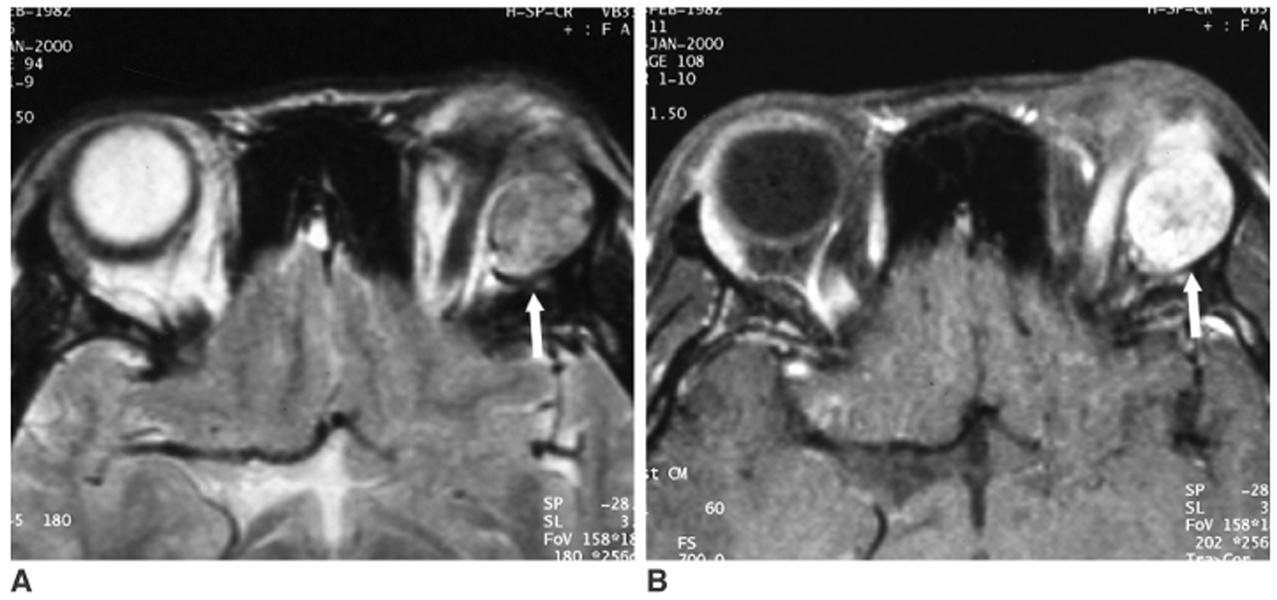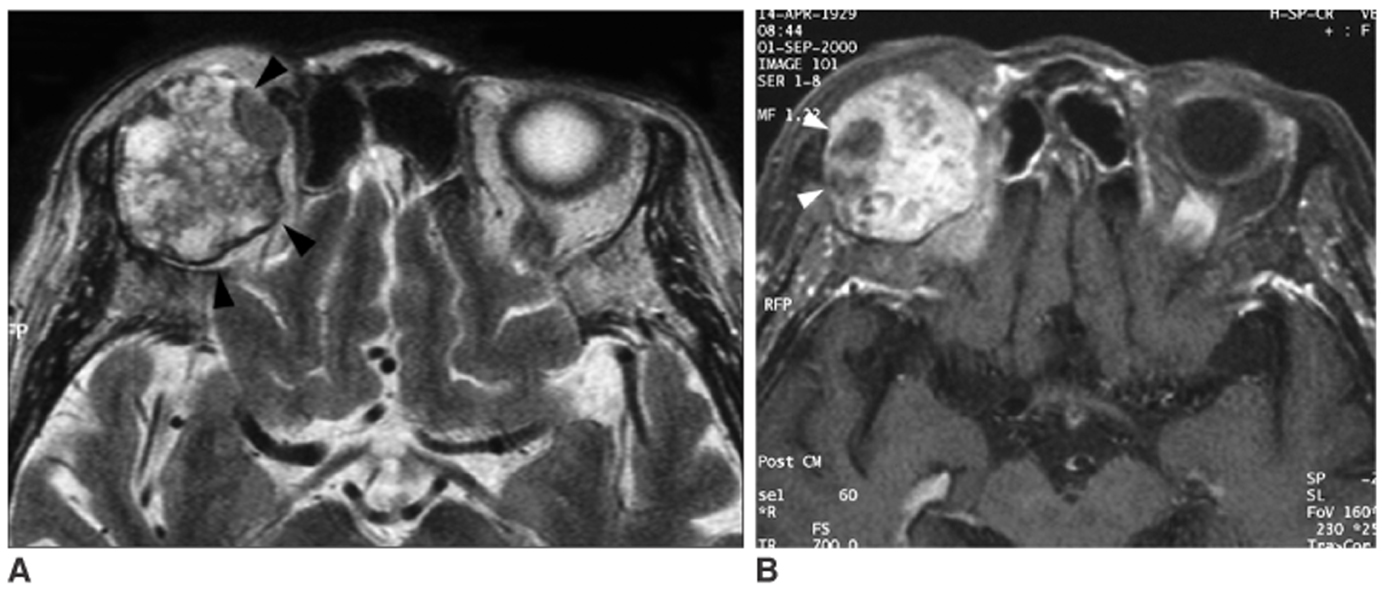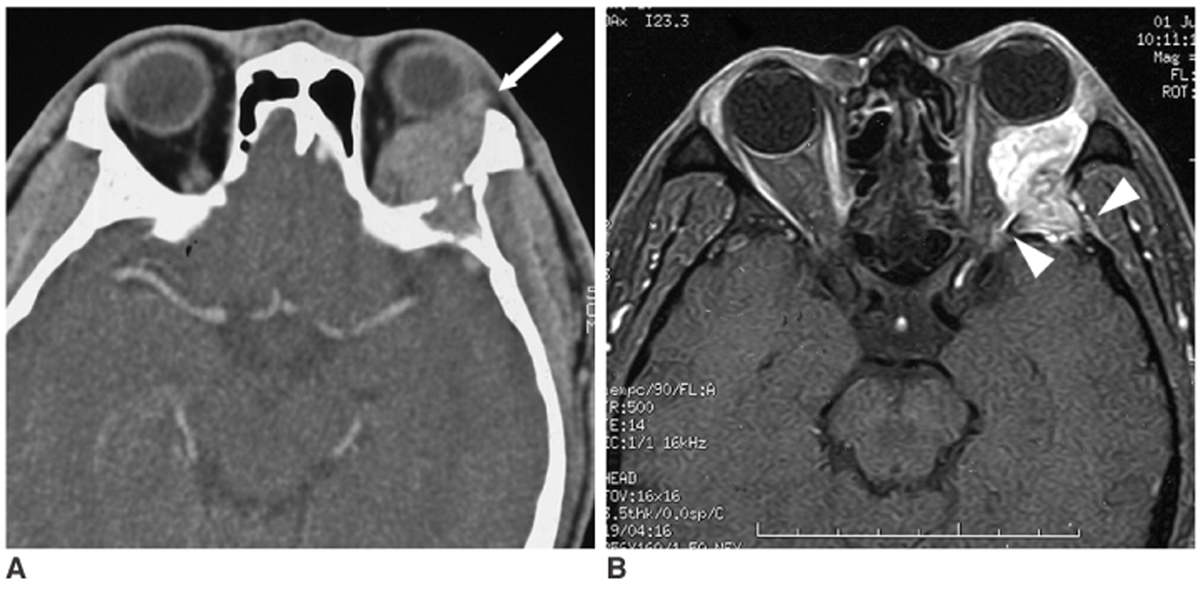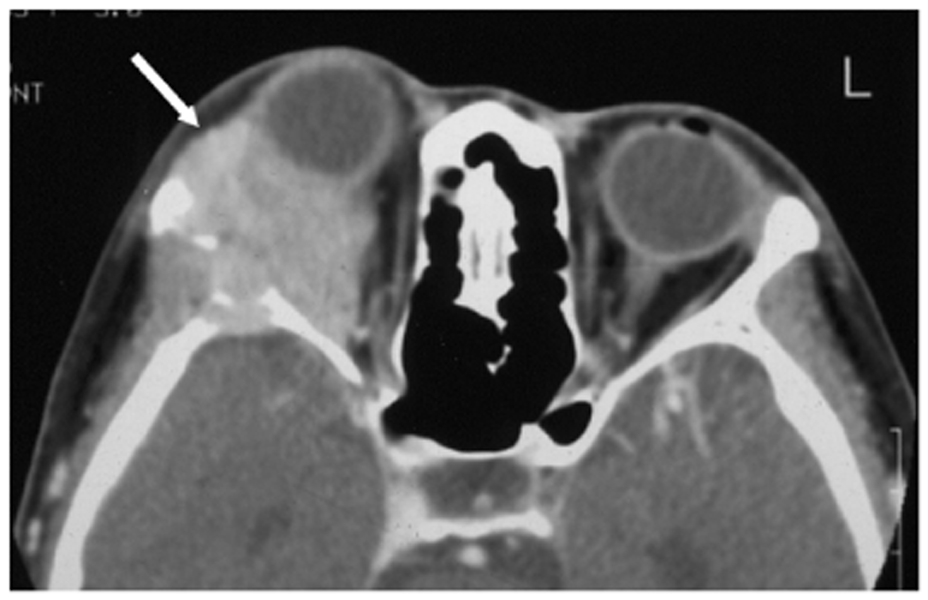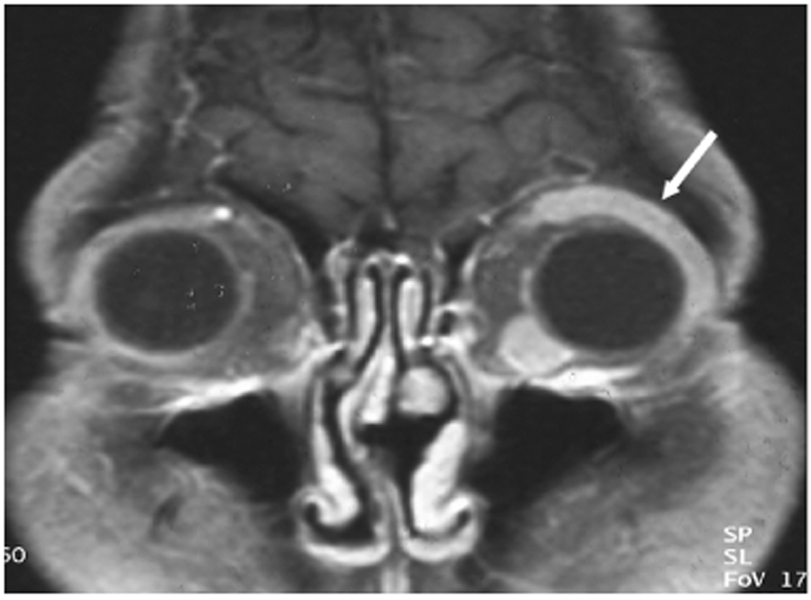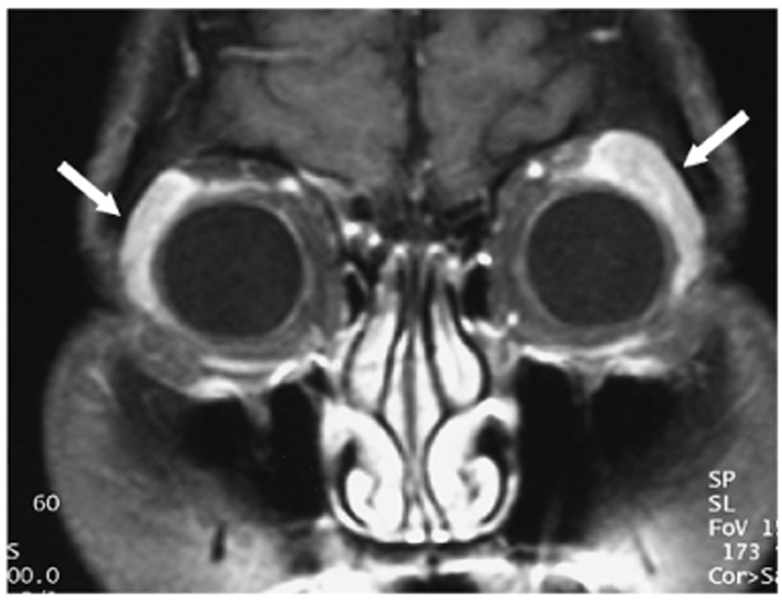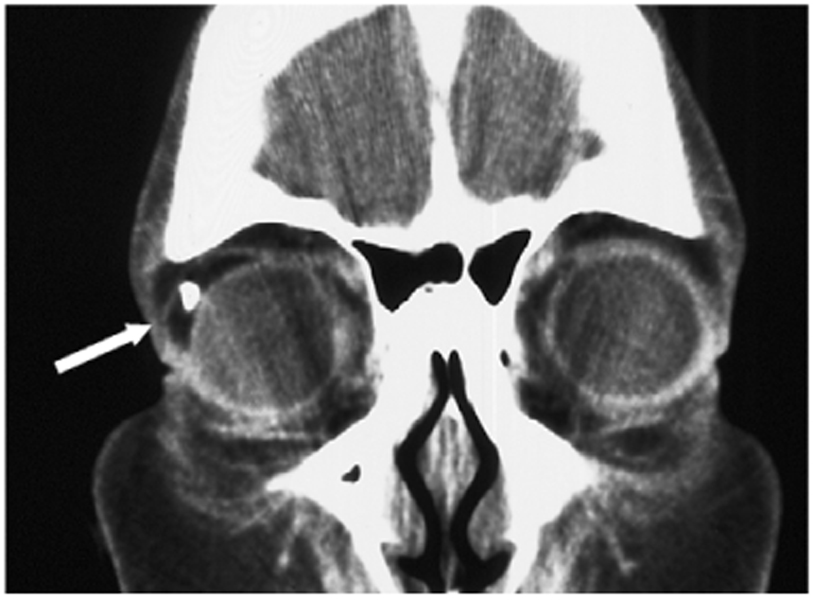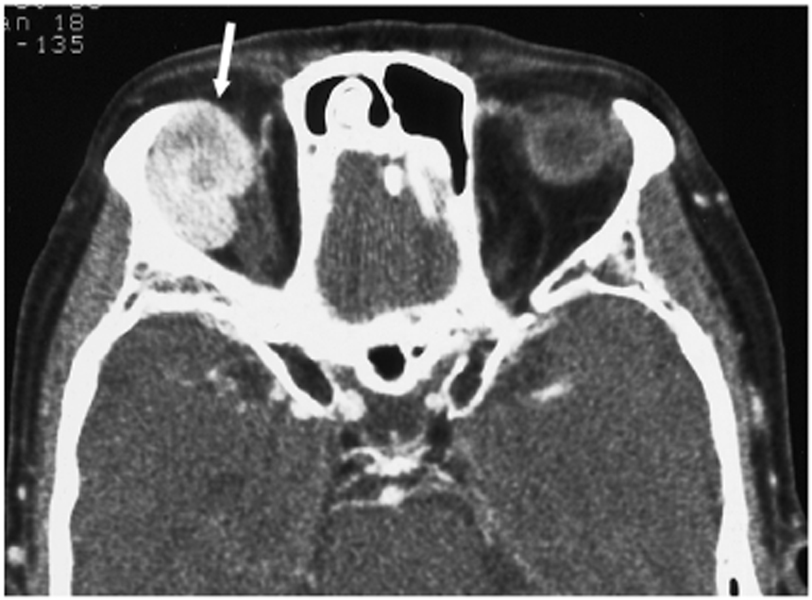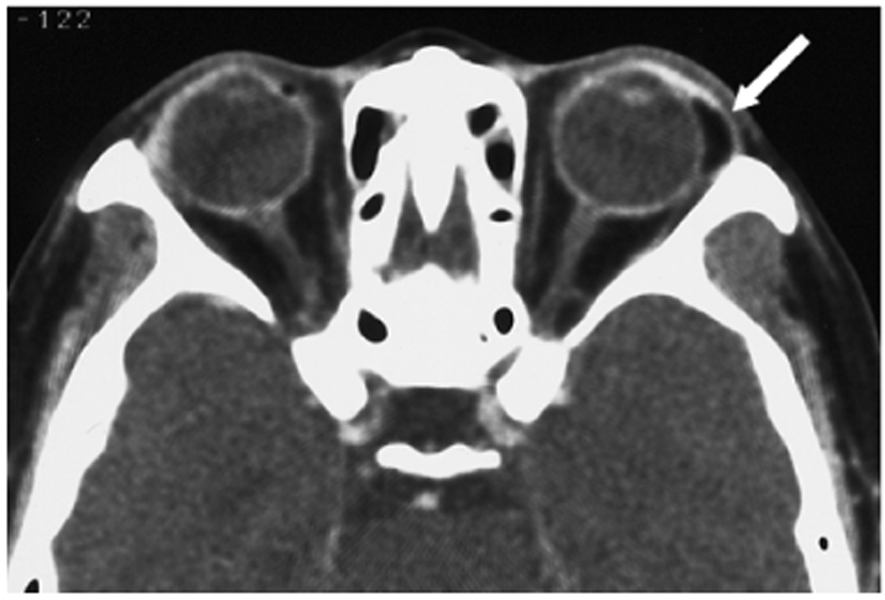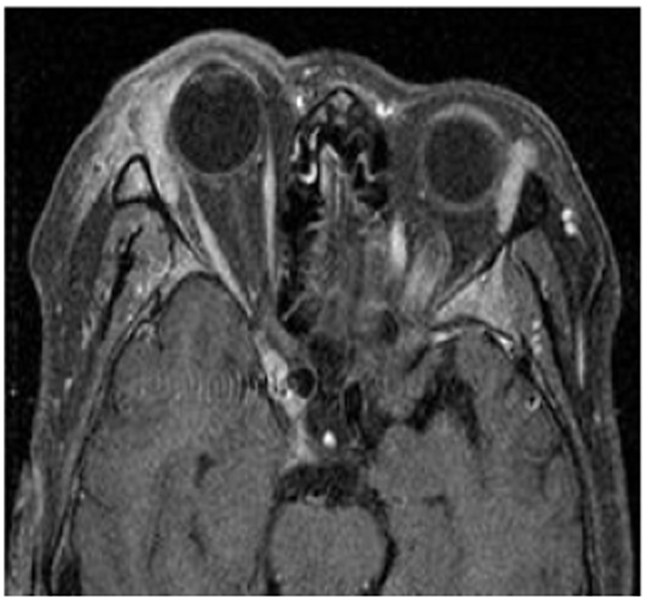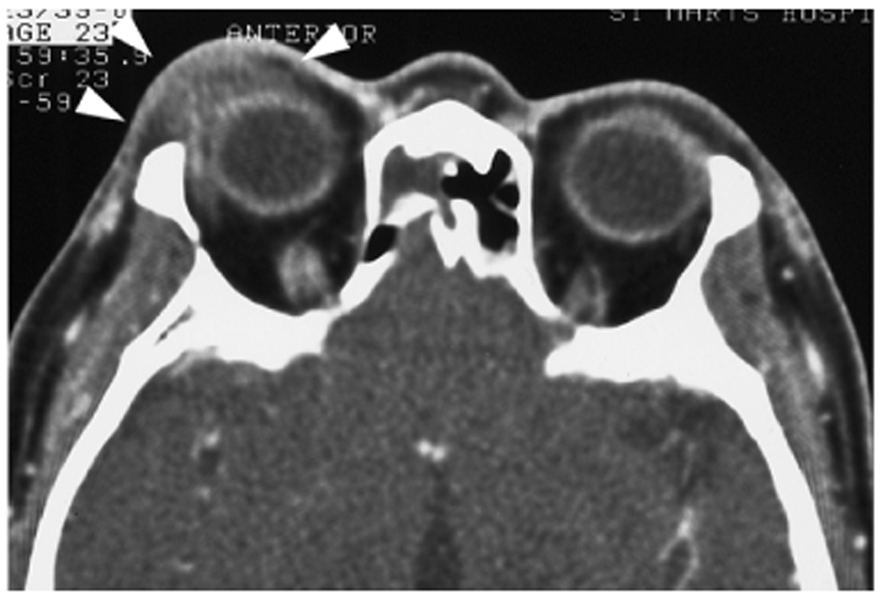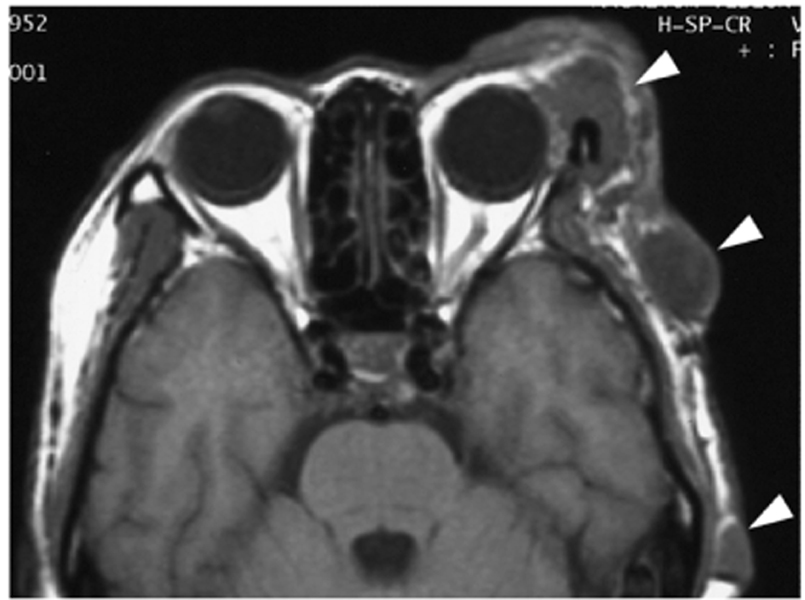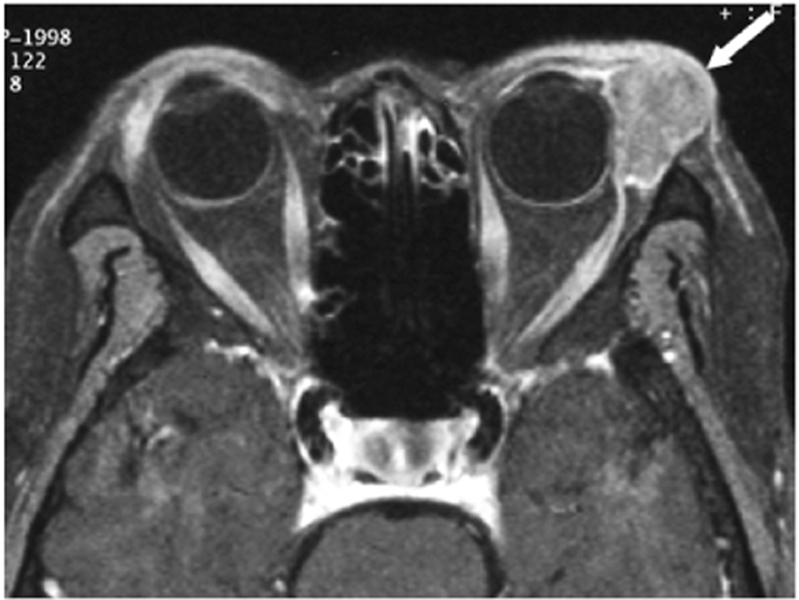Korean J Radiol.
2007 Aug;8(4):336-342. 10.3348/kjr.2007.8.4.336.
The Radiological Spectrum of Orbital Pathologies that Involve the Lacrimal Gland and the Lacrimal Fossa
- Affiliations
-
- 1Department of Radiology, St Mary's Hospital, Catholic University College of Medicine, Seoul, Korea. ahn-kj@catholic.ac.kr
- 2Department of Ophthalmology, St Mary's Hospital, Catholic University College of Medicine, Seoul, Korea.
- KMID: 1110731
- DOI: http://doi.org/10.3348/kjr.2007.8.4.336
Abstract
- CT and MRI are utilized to differentiate between different types of masses and to determine the extent of lesions involving the lacrimal gland and the fossa. Although many diseases that affect the lacrimal gland and fossa are specifically diagnosed by imaging, it is frequently very difficult to differentiate each specific disease on the basis of image characteristics alone due to intrinsic similarities. In lacrimal gland epithelial tumors, benign pleomorphic adenomas are seen most commonly with a well defined benign appearance, and a malignant adenoid cystic carcinoma is seen with a typical invasive malignant appearance. However, a malignant myoepithelial carcinoma is seen with a benign looking appearance. Lymphomatous lesions of the lacrimal gland include a broad spectrum ranging from reactive hyperplasia to malignant lymphoma. These lesions can be very difficult to differentiate both radiologically and pathologically. Generally, lymphomas tend to occur in older patients. The developmental cystic lesions found in the lacrimal fossa such as dermoid and epidermoid cysts can be diagnosed when the cyst involves the superior temporal quadrant of the orbit and manifests as a non-enhancing cystic mass and, in case of a lipoma, it is diagnosed as a total fatty mass. However, masses of granulocytic sarcoma and xanthogranuloma, as well as vascular masses, such as a hemangiopericytoma, are difficult to diagnose correctly on the basis of preoperative imaging findings alone. A careful clinical evaluation and moreover, a pathologic verification, are needed. In this pictorial review, the various imaging spectrums of pathologic masses involving the lacrimal gland and fossa are presented, along with appropriate anatomy and pathology reviews.
MeSH Terms
-
Carcinoma, Squamous Cell/radiography
Conjunctival Neoplasms/radiography
Cysts/radiography
Eye Neoplasms/*radiography
Hemangiopericytoma/radiography
Humans
Lacrimal Apparatus/*pathology
Lacrimal Apparatus Diseases/radiography
Lipoma/radiography
Lymphoma/radiography
Neoplasms, Glandular and Epithelial/radiography
Neurofibroma/radiography
Sarcoma, Myeloid/radiography
Figure
Cited by 1 articles
-
Calculated Brain CT Angiography Volumes of Lacrimal Glands in Normal Korean Orbits
Seoung Hyun An, Sang Wook Jin, Won Seok Yang, Hee Bae Ahn
J Korean Ophthalmol Soc. 2014;55(10):1413-1417. doi: 10.3341/jkos.2014.55.10.1413.
Reference
-
1. Shields CL, Shields JA, Eagle RC, Rathmell JP. Clinicopathologic review of 142 cases of lacrimal gland lesions. Ophthalmology. 1989. 96:431–435.2. Balchunas WR, Quencer RM, Byrne SF. Lacrimal Gland and Fossa Masses: evaluation by computed tomography and A-mode echography. Radiology. 1983. 149:751–758.3. Hesselink JR, Davis KR, Dallow RL, Roberson GH, Taveras JM. Computed tomography of masses in the lacrimal gland region. Radiology. 1979. 131:143–147.4. Mafee MF. Som PM, editor. Orbit: embryology, anatomy, and pathology. Head and neck imaging. 2003. 2nd ed. St. Louis: Mosby;529–654.5. Mizokami H, Inokuchi A, Sawatsubashi M, Takagi S, Tsuda K, Tokunaga O. Adenoid cystic carcinoma of the lacrimal gland with wide and severe myoepithelial differentiation. Auris Nasus Larynx. 2002. 29:77–82.6. Mafee MF, Haik BG. Lacrimal gland and fossa lesions: role of computed tomography. Radiol Clin North Am. 1987. 25:767–779.7. Narla LD, Newman B, Spottswood SS, Narla S, Kolli R. Inflammatory pseudotumor. Radiographics. 2003. 23:719–729.8. Valvassori GE, Sabnis SS, Mafee RF, Brown MS, Putterman A. Imaging of orbital lymphoproliferative disorders. Radiol Clin North Am. 1999. 37:135–150.9. Miszkiel KA, Sohaib SA, Rose GE, Cree IA, Moseley IF. Radiological and clinicopathological features of orbital xanthogranuloma. Br J Ophthalmol. 2000. 84:251–258.
- Full Text Links
- Actions
-
Cited
- CITED
-
- Close
- Share
- Similar articles
-
- A Case of Intraorbital Ectopic Lacrimal Gland with Lacrimal Duct
- A Case of Mucoepidermoid Carcinoma of the Lacrimal Gland
- Study of the Lacrimal Gland Size in Korean Using Orbital Computed Tomography
- The Change of Thickness of the Lacrimal Gland by Orbital Computed Tomographies associated with Aging
- Apocrine Hidrocystoma Presenting as a Lacrimal Gland Mass


